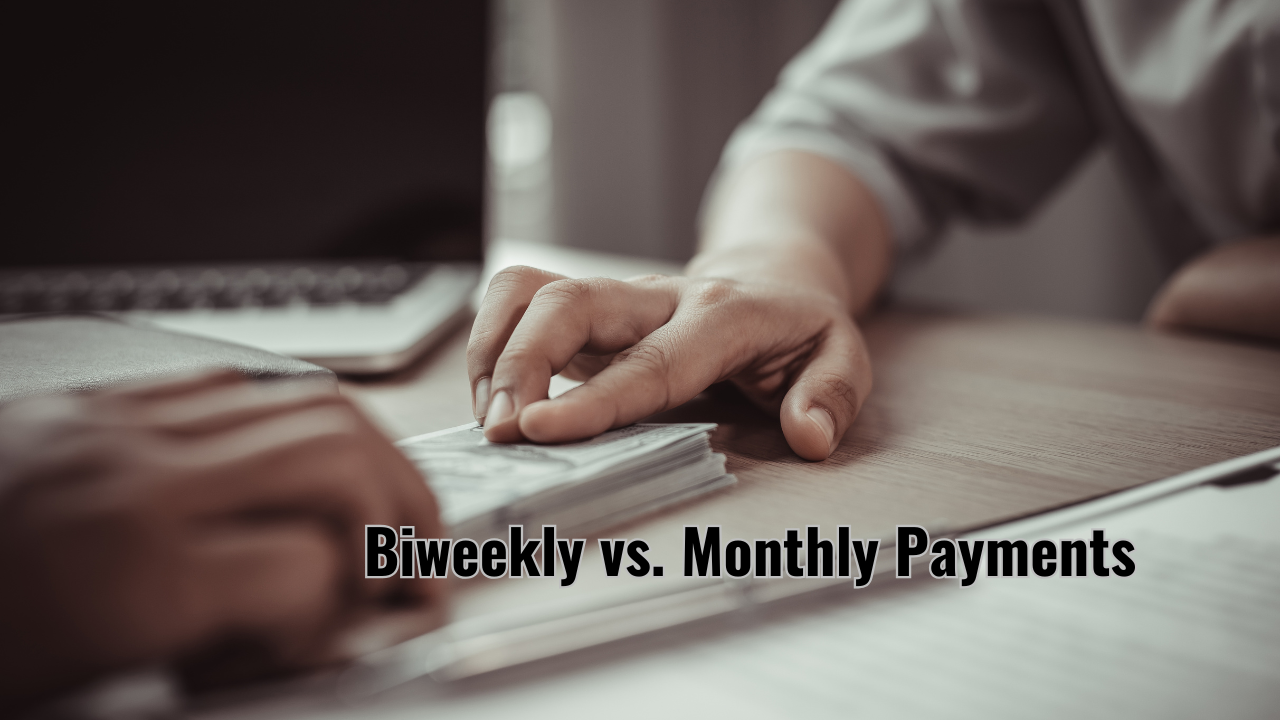Choosing between biweekly and monthly payments can significantly impact how quickly you pay off debt. While both methods help reduce your loan balance, the structure of your payments determines how much interest you save and how fast you become debt-free.
Many borrowers stick to monthly payments without realizing that a biweekly payment strategy can accelerate debt payoff and reduce interest costs. Let’s break down both options, compare their effects, and help you decide which is best for your financial goals.
Understanding Biweekly Payments
Switching from a monthly to a biweekly schedule means making payments every two weeks instead of once per month. But how does this affect your loan repayment?
✅ How Biweekly Payments Work
With a biweekly plan, you make half your monthly payment every two weeks. Since there are 52 weeks in a year, this results in 26 half-payments—or the equivalent of 13 full payments instead of 12. This extra payment reduces your loan balance faster and decreases the total interest you pay.
Example: If your mortgage payment is $1,500 per month, switching to biweekly payments means paying $750 every two weeks. By the end of the year, you’ve made an extra $1,500 payment, cutting down your loan balance ahead of schedule.
✅ Benefits of Biweekly Payments
- Faster Loan Payoff – The extra annual payment reduces your loan term.
- Lower Interest Costs – Less time in debt means less money spent on interest.
- Smaller, More Frequent Payments – May feel more manageable than a large lump sum.
⚠️ Potential Drawbacks
- May Require Lender Approval – Some lenders charge fees or don’t allow biweekly payments.
- Budgeting Adjustments – Requires planning for more frequent withdrawals.
- Limited Impact on Short-Term Loans – Works best for long-term debts like mortgages.
How Monthly Payments Work
Monthly payments are the traditional loan repayment method. Borrowers make one fixed payment each month, covering principal and interest.
✅ Benefits of Monthly Payments
- Simple and Predictable – Easy to budget for one payment per month.
- No Extra Charges from Lenders – Unlike biweekly setups, lenders rarely impose fees for standard monthly payments.
- Works Well for Shorter Loans – If you have a personal loan or car loan with a short term, biweekly payments may not provide significant benefits.
⚠️ Drawbacks of Monthly Payments
- Slower Loan Payoff – You make only 12 payments per year.
- More Interest Over Time – Paying interest for a longer period increases overall loan costs.
Biweekly vs. Monthly Payments: Key Differences
Now that we’ve covered how each method works, let’s compare them side by side.
| Feature | Biweekly Payments | Monthly Payments |
|---|---|---|
| Payment Frequency | Every two weeks | Once per month |
| Extra Payments | One extra per year | No extra payments |
| Interest Savings | Lower total interest | More interest paid |
| Loan Term Impact | Shortens loan duration | Standard payoff time |
| Budgeting | Requires biweekly funds | One fixed monthly sum |
Verdict: If your goal is to pay off debt faster and save on interest, biweekly payments are the better option. However, if you prefer simplicity and predictability, monthly payments may be more convenient.
How Much Can You Save with Biweekly Payments?
The savings from switching to biweekly payments depend on your loan amount, interest rate, and repayment term.
Example Savings Calculation
Let’s say you have a $250,000 mortgage at a 4% interest rate over 30 years.
- Monthly Payments: $1,193 per month. Total interest paid: $179,674.
- Biweekly Payments: $596 every two weeks. Total interest paid: $153,365.
- Savings: $26,309 and the loan is paid off 4 years earlier!
The savings can be substantial, especially for long-term loans. Use a biweekly mortgage calculator to see how much you could save.
Should You Switch to Biweekly Payments?
Deciding between biweekly and monthly payments depends on your financial situation and lender flexibility. Here’s how to determine if biweekly payments are right for you:
- Does your lender allow biweekly payments without fees? Some charge for setting up this plan.
- Can you handle biweekly withdrawals? If your budget allows for more frequent payments, you’ll save on interest.
- Are you looking to pay off your loan faster? If yes, biweekly payments can help you reach debt freedom sooner.
If your lender doesn’t offer a biweekly option, you can make one extra payment per year manually to achieve a similar effect.
Conclusion
Choosing between biweekly and monthly payments depends on your financial goals. Biweekly payments offer faster loan payoff and interest savings, making them ideal for borrowers who want to get out of debt sooner. However, monthly payments are more predictable and easier to manage if budgeting is a concern.
Before switching, check with your lender to ensure biweekly payments are allowed without penalties. If they aren’t, consider making extra payments manually to achieve similar savings.
Have you tried biweekly payments? Share your experience in the comments below!

Marie Johnson is a finance expert and the author of EasyFinanceHelp, where she provides practical insights on personal finance, budgeting, and smart money strategies. With a clear and straightforward approach, she helps readers make informed financial decisions with ease.

